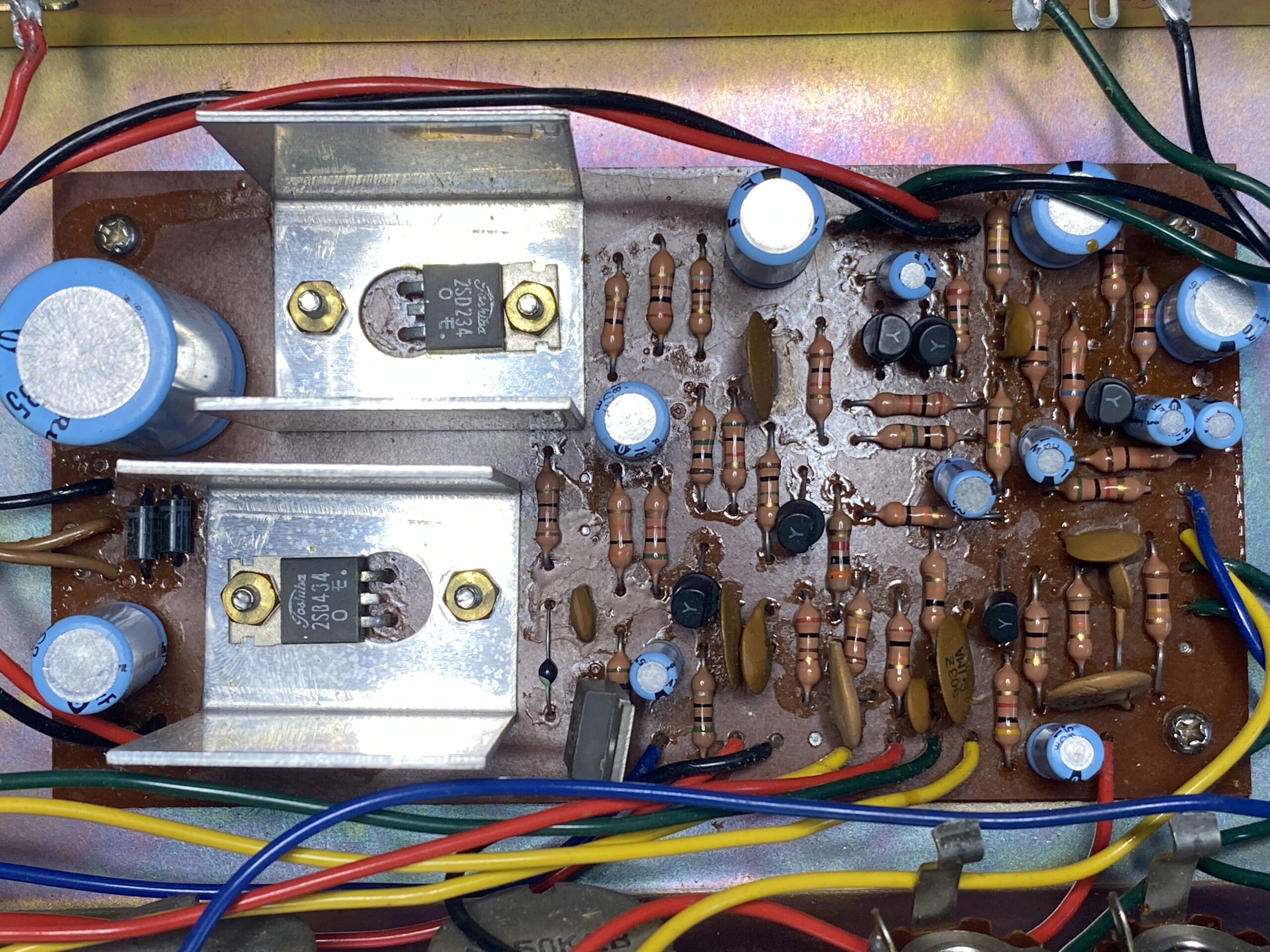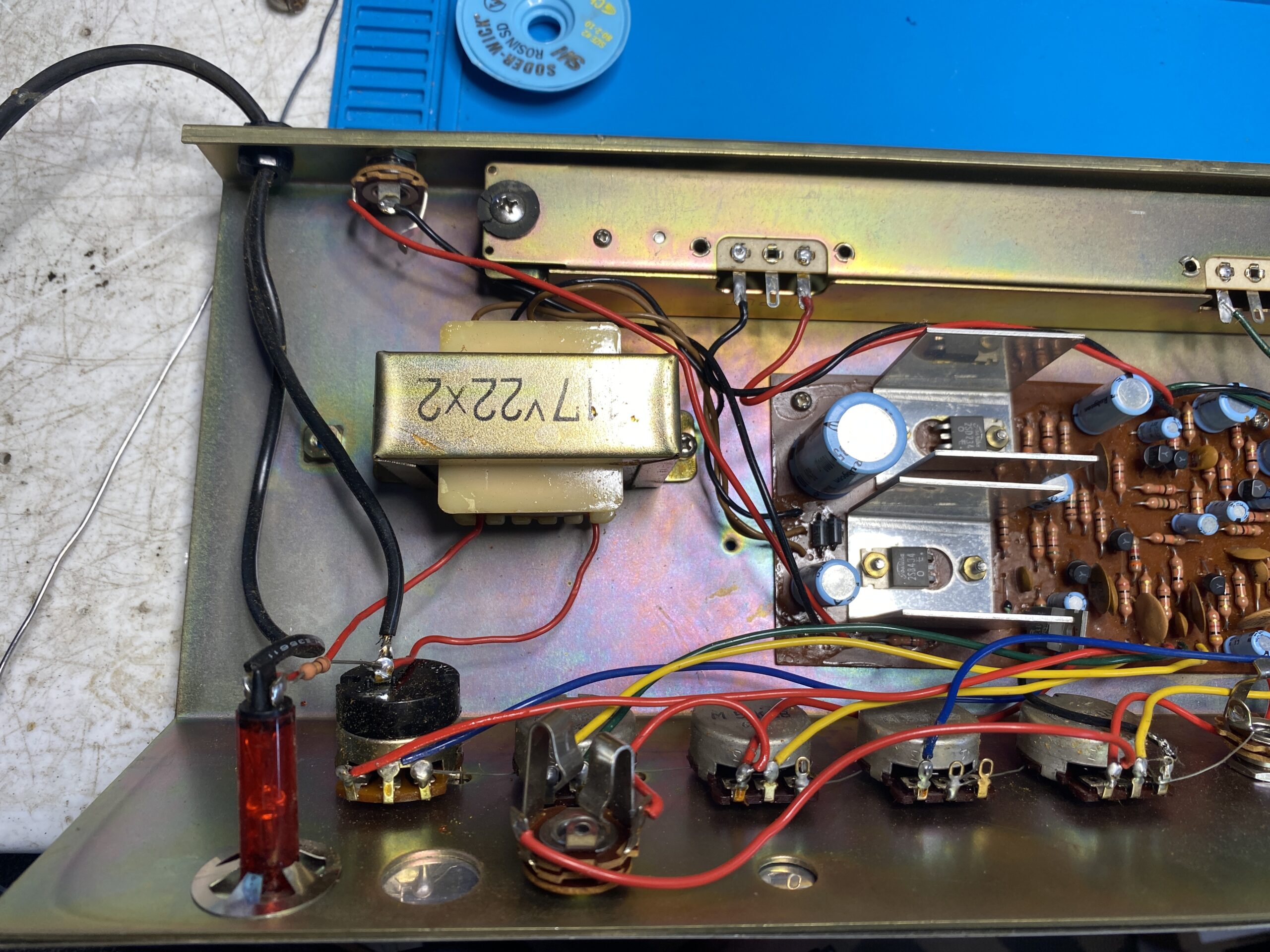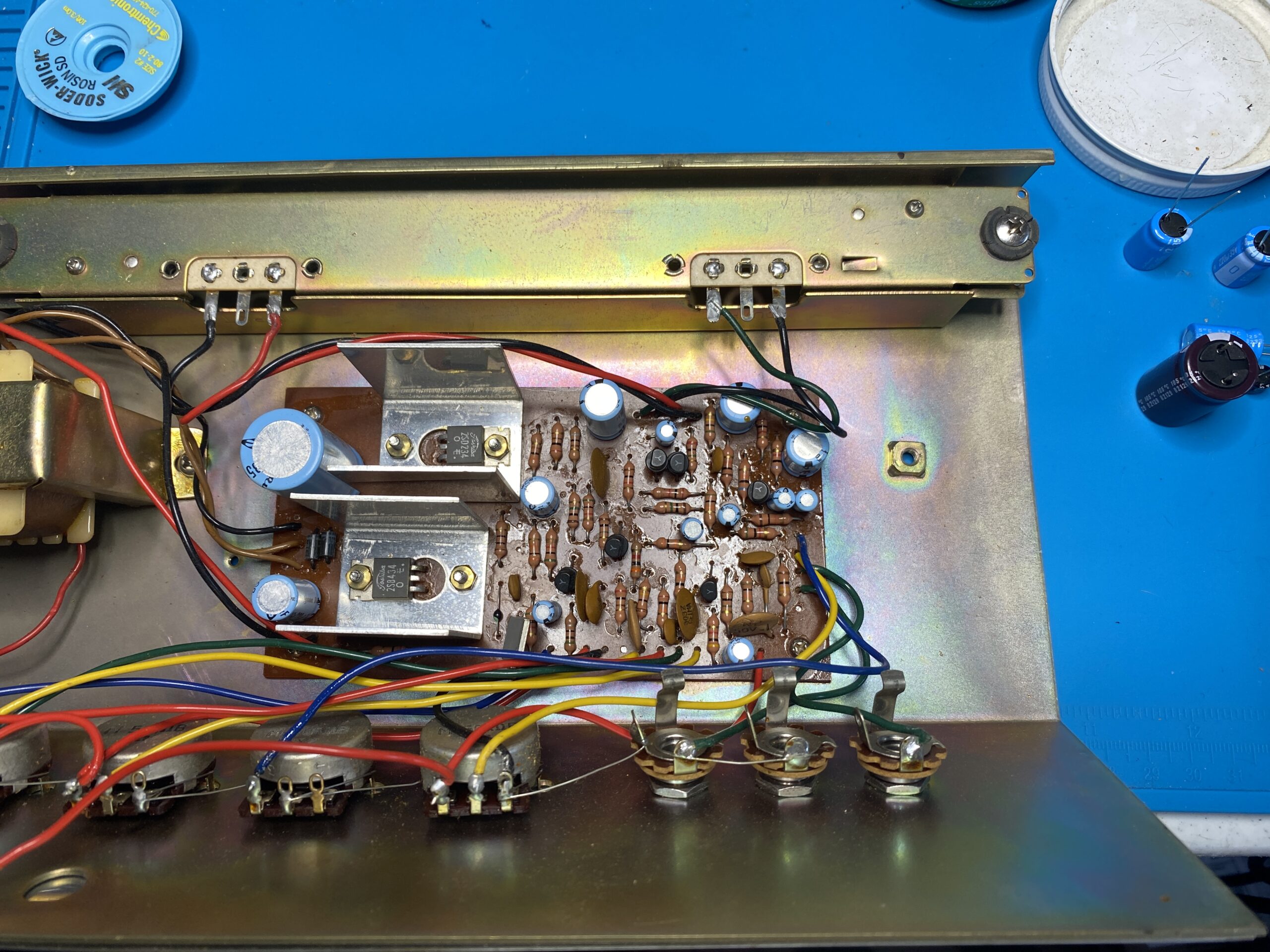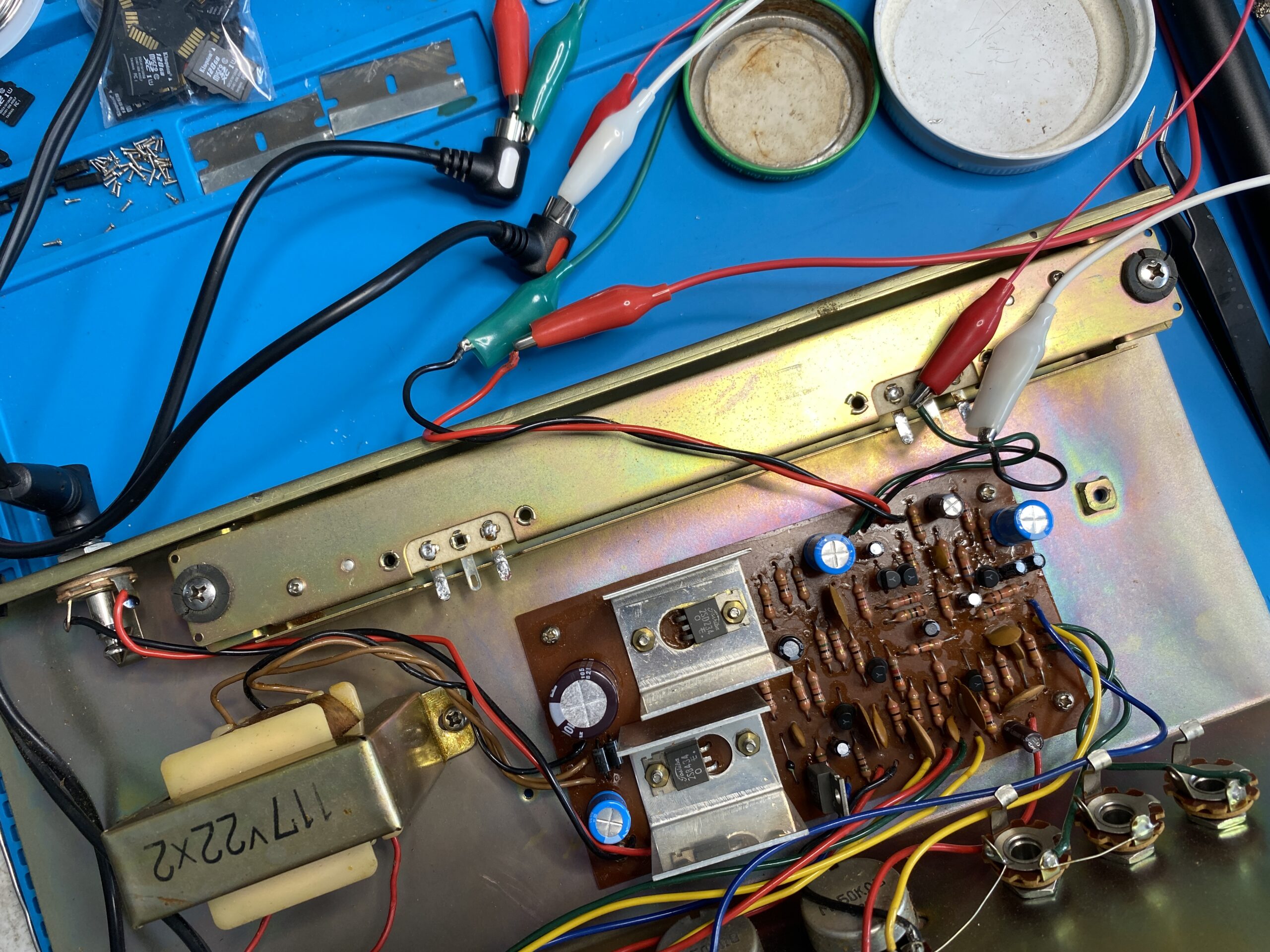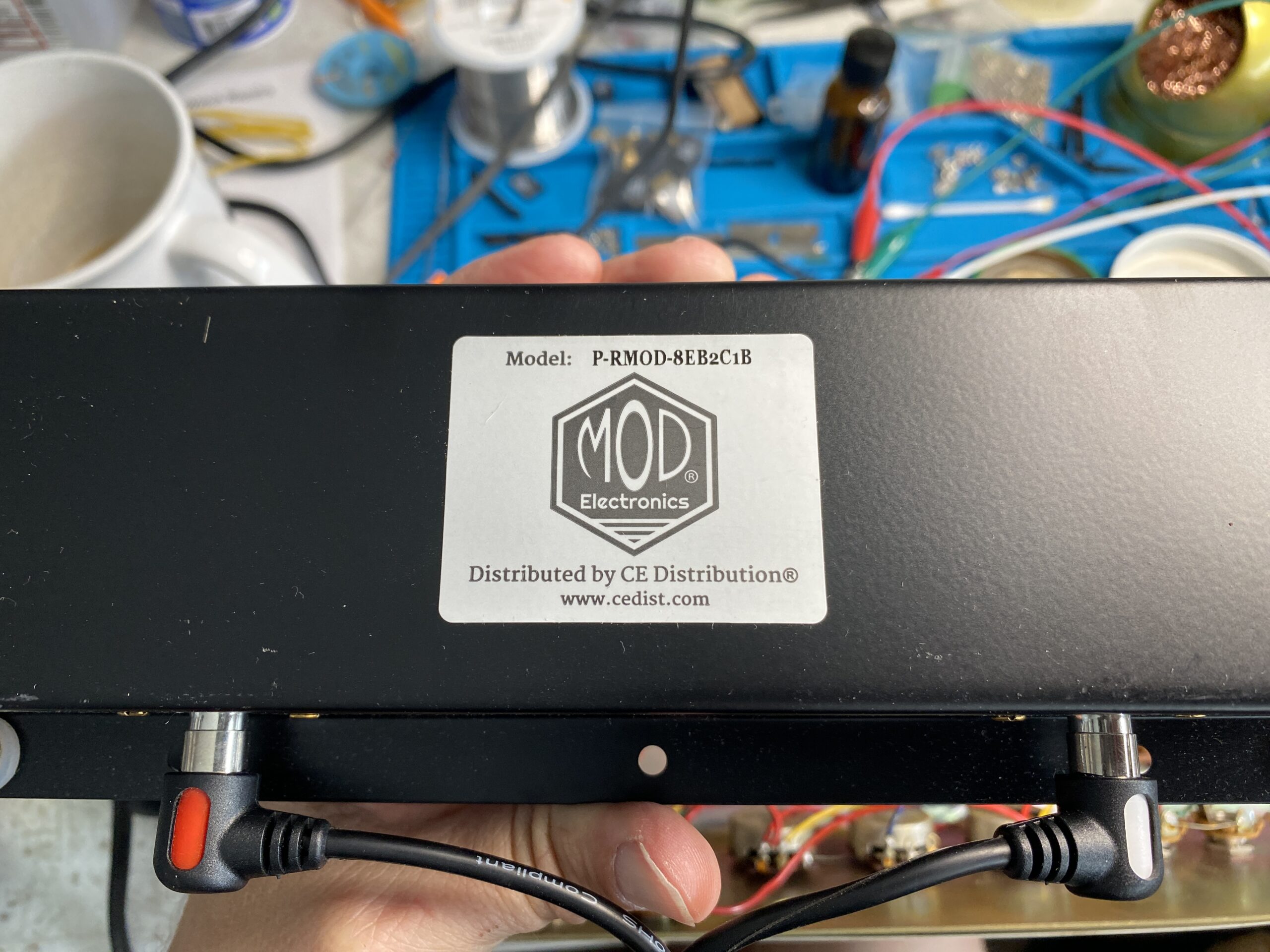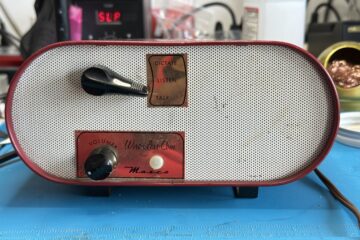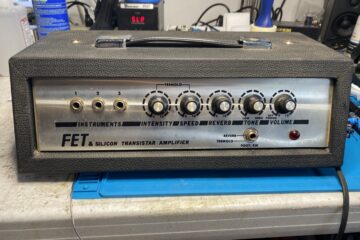Servicing the Amplifier – Old Capacitors Out, New Capacitors In
First thing to do was to replace all the electrolytic capacitors through out the amplifier. There wasn’t any hum or leakage on the originals, but they were well past due to be swapped out. Pulled out the old japanses caps and replacement them with some high quality new production caps. Fired the amplifier back up after servicing and the sound was actually a little more full sounding as well as the tremolo came more alive and smoother sounding.
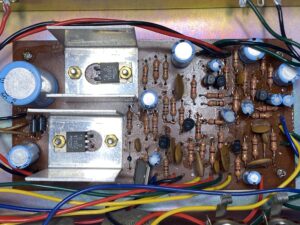
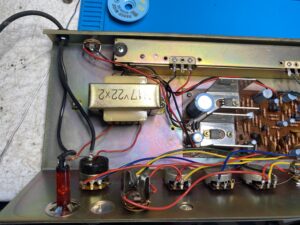
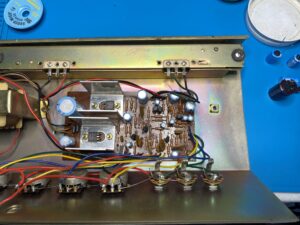
Messing with the reverb
After playing around with the amplifier, I rather enjoyed the sound and feel that this little thing was putting out, with one exception: the reverb. The reverb had a very clangy, lo-fi midrange, almost slapback verb that you hear on the old Silvertone 1484 amplifiers. I am pretty sure they used a similar piezo-style reverb, which has that characteristic. Out of curiosity, I unsoldered the wire connections to the tank and decided to measure the resistance reading on the input and output of the tank. One side, as nothing was marked on the tank, was reading around 220 ohms, while the other side read around 100 ohms. Note that this is reading DC resistance and not impedance. I pulled out a 4AB2C1B reverb tank and took the DC resistance of the input and output just to see what I was reading. The input was showing around 1.5 ohms (or 8 ohm impedance), and the output was showing around 240 ohms (2250 ohm impedance). Now we are getting somewhere. I did a little digging and figured out that the 8EB2C1B (800 ohm input / 2250 output) might put me in the ballpark for working with this amplifier.
I ordered a new 8EB2C1B tank (which is typically used in the Fender Blues Junior, Hot Rod Deluxe, Deville, and Blues series) from CE. Once the tank arrived, I quickly took DC measurements to see if they lined up with my theory. Sure enough, I was reading around 78 ohms on one side and 220 ohms on the other. Time to hook it up. So with some alligator clips and careful positioning, I connected the tank to the amp and fired it up. There was a very much improved reverb sound coming out of this little amp. It wasn’t quite the Fender Reverb drip, but it was a HUGE improvement over the original tank. Paired with the built-in tremolo, it was now a lot of fun to play on.
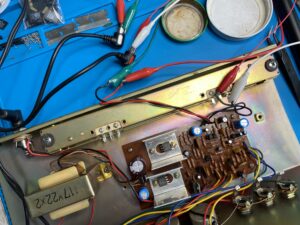
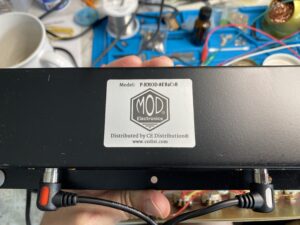
So What’s Next?
Now that its up and running nicely, it’s time to go through and trace out the circuit. I really want to figure out the tremolo circuit that they used. Its a very smooth sounding trem, not choppy at all. I would put it very close to the older bias wiggle trem from the Fender tweed era.
